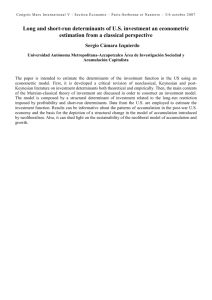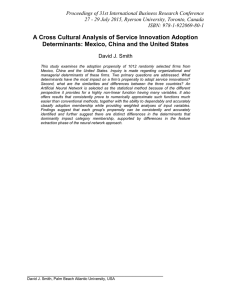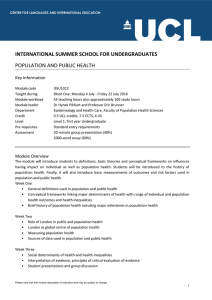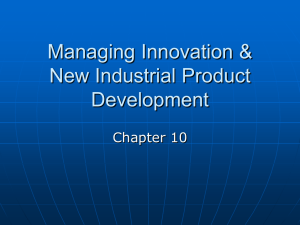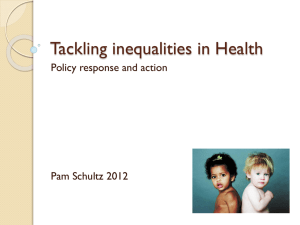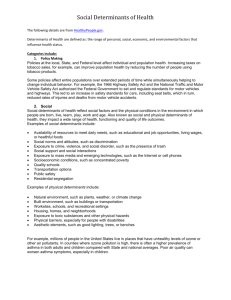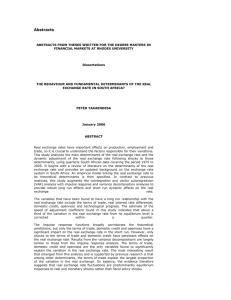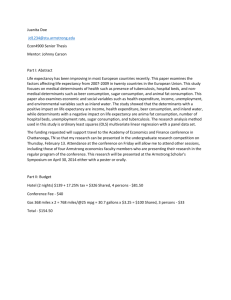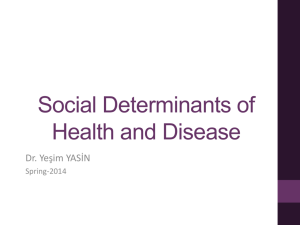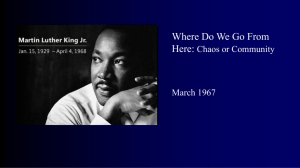Medicine is a social science, and politics nothing but
advertisement
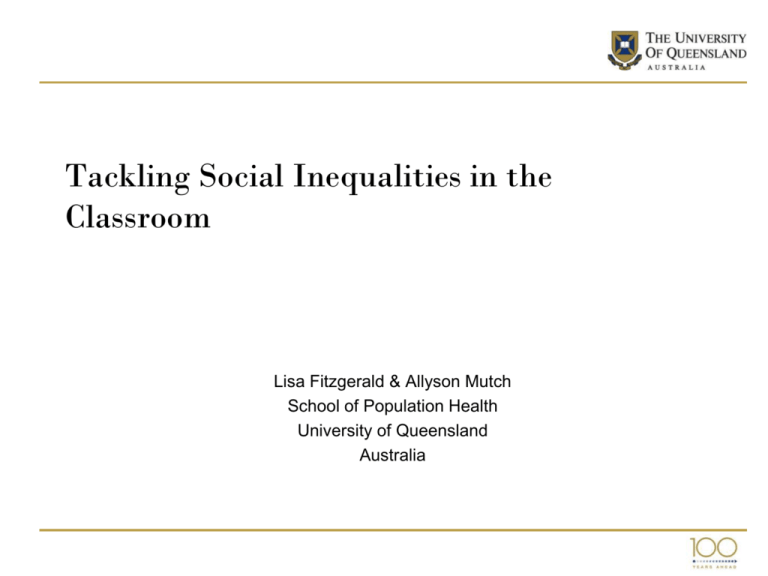
Tackling Social Inequalities in the Classroom Lisa Fitzgerald & Allyson Mutch School of Population Health University of Queensland Australia Setting the scene for our teaching Medicine is a social science, and politics nothing but medicine on a grand scale... The improvement of medicine would eventually prolong human life, but improvement of social conditions could achieve this result even more rapidly and successfully (Rudolf Virchow, 1821-1902) Our role in public health … Our role as sociologists... Our role as teachers… http://www.sfchronicle.com/archive/item/A-decade-of-homelessnessThousands-in-S-F-30431.php Challenging current approaches: within public health “Public health success is as much about imagination as evidence: challenging what is accepted as the so called normal, or business as usual. Public health must regain the capacity and will to address complexity and dare to confront power. This demands a new mix of interventions and actions to alter and ameliorate the determinants of health.” (Lang and Rayner, 2012;BMJ 345:e5466) Challenges within our classroom Our Students • Postgraduate Students doing the MPH/MIPH • Core course PUBH7620: Social Perspectives • Graduate students doing the MBBS • Undergraduate students doing the BHlthSc • Core course PUBH1103: Health Systems and Policy Critical challenges • • • • • Diverse MPH/MIPH audience – local/international; internal/external Frequently privileged MBBS students often disengaged Young undergrads, new to University and academic methods Unfamiliar, uncomfortable, sometimes unnecessary to many students Needing to engage the students in critical thinking and reflection on the social determinants Flipping the classroom to facilitate active learning TEDI Exemplar of the flipped classroom Our Postgraduate Classroom • Aligning curriculum: learning objectives + activities + assessment • Stripping back • Space and tools to relate course content to existing/everyday experiences/knowledge • Active learning- using real examples, case studies and problem based learning • Structured use of BB (pre class activities and post class engagement) • Technology enhanced – prerecordings, blackboard smorgasbord, videoed class discussions, adobe connect Our Undergraduate Classroom • Aligning curriculum: learning objectives + activities + assessment • Stripping back • Active learning- using real examples, case studies, current policy issues • Structured lectorials, group focused discussion, assessment based preparation • Use of multi-media and technology • Structured use of BB (pre class activities and post class engagement) Translating these changes into teaching social determinants • Description renders students powerless - so what can we do about it? • Deeper understanding, that moves beyond description, of social inequalities to draw connections and make it real • Focusing on engaging and empowering students with tools for critical analysis and tools for action Critical Health literacy framework for the Social Determinants • Knowledge: – Smorgasbord of evidence – Case based examples – the patient journey • Compass – Activity focused - Last straw, budget, privilege walk – Reflective journaling • Skills – Tools that consider upstream and downstream approaches – The ‘Walk’ • Action Mogford, Gould and Devoght (2010) Developing Skills • “In my opinion, we were able to learn about social, cultural, environmental determinants of health and what the community feels about the problems at hand. It enabled us as students to appreciate and internalize what we are studying in class” • “Blending with the community helps the community to openly share their problem with us and strengthens their trust with us. In addition, it allows us to plan from a better informed point of view on matters pertaining to the community; in this case, strategies and activities will reflect what the community wants to see besides reducing if not closing health inequalities”. Supporting Action An Integrated Classroom? Engagement and Advocacy Research
